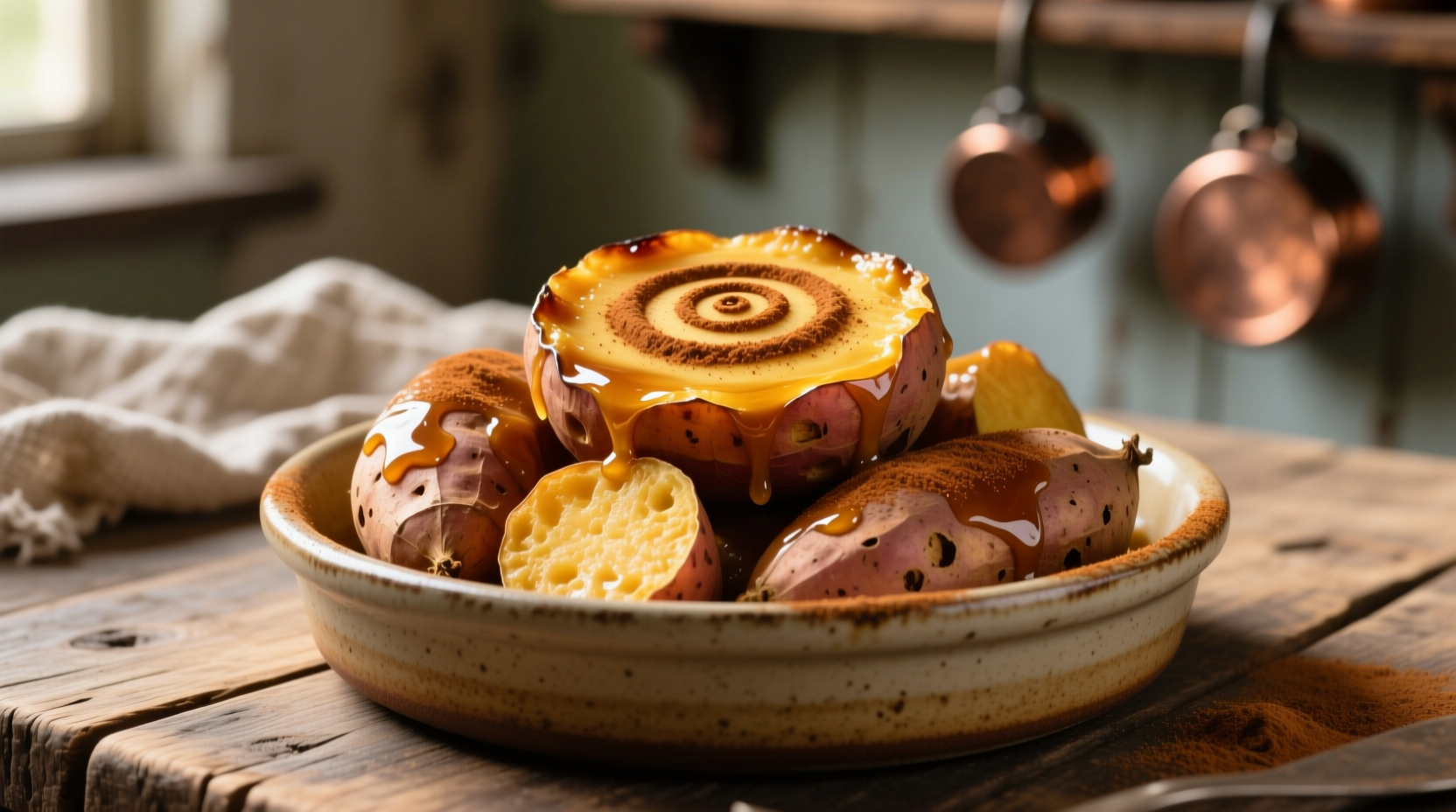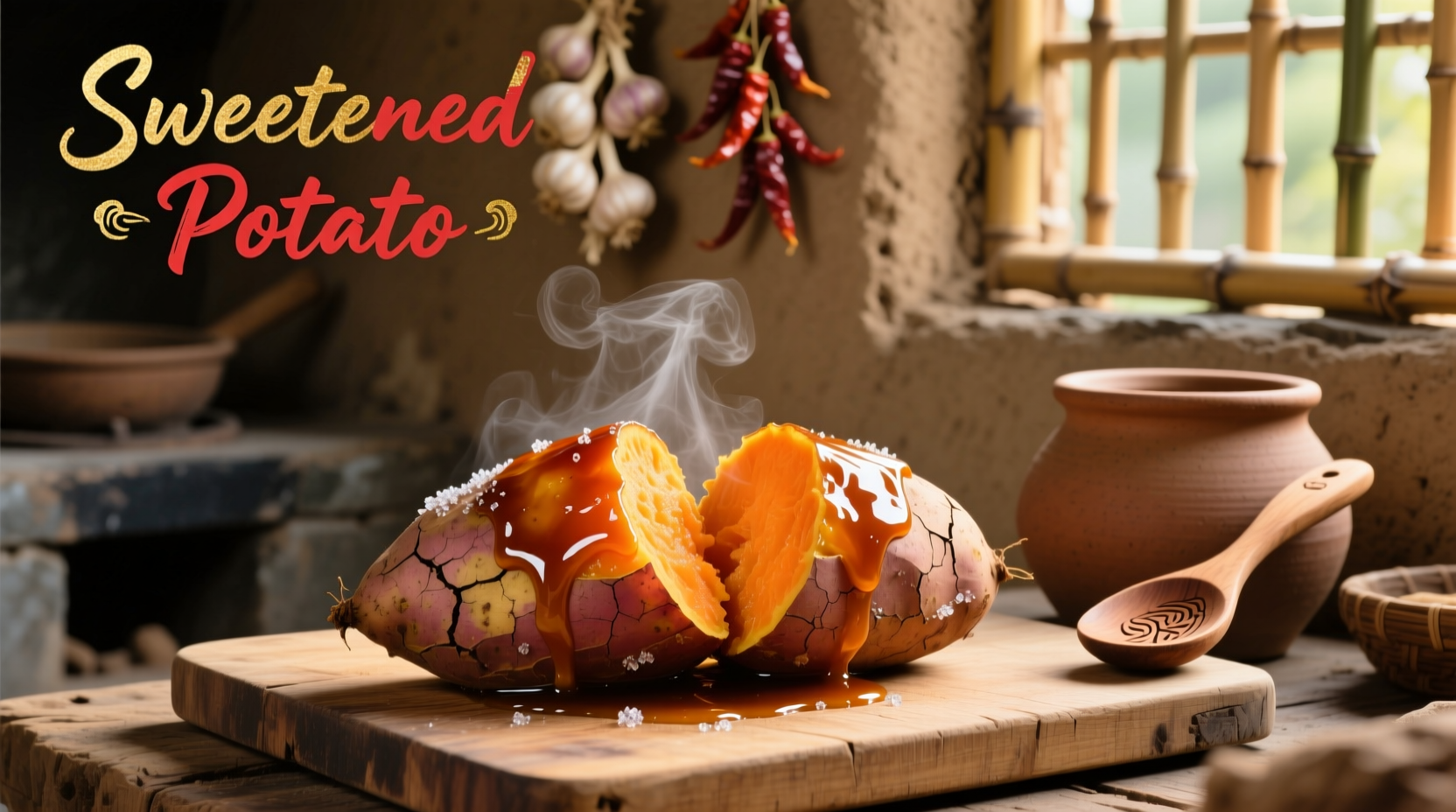Sweetened potatoes aren't just holiday staples—they're culinary masterpieces that transform humble tubers into complex flavor experiences. When you understand the science behind sweetening techniques, you unlock the ability to create dishes that balance natural sweetness with added sugars for maximum flavor impact without overwhelming the potato's inherent nutritional value.
Understanding Sweetened Potato Fundamentals
Unlike regular sweet potatoes that showcase their natural 4-7% sugar content, sweetened potatoes incorporate additional sweeteners through cooking processes that enhance both texture and flavor complexity. The key difference lies in the caramelization process—when heat interacts with the potato's starches and added sugars, it creates hundreds of new flavor compounds that elevate the simple tuber into something extraordinary.
| Characteristic | Plain Sweet Potato | Sweetened Sweet Potato |
|---|---|---|
| Natural Sugar Content | 4-7% | Enhanced to 15-25% |
| Primary Preparation | Roasting, boiling, steaming | Simmering in syrup, glazing, candying |
| Texture Profile | Firm to creamy | Glossy exterior, tender interior |
| Common Culinary Use | Main dish, side | Dessert, holiday specialty |
This transformation isn't merely about adding sugar—it's a precise culinary technique documented in USDA's FoodData Central database showing how proper sweetening can actually increase bioavailability of certain nutrients while creating more complex flavor profiles.
The Evolution of Sweet Potato Sweetening Techniques
Sweet potato sweetening has evolved dramatically from its agricultural origins:
- Pre-1800s: Indigenous American tribes roasted sweet potatoes to concentrate natural sugars
- 1800-1900: Enslaved Africans in America developed candied yam preparations using molasses
- Early 1900s: Canned sweet potatoes in syrup became commercially available
- Mid-1900s: Marshmallow-topped casserole became Thanksgiving staple
- Present Day: Chefs experiment with maple, honey, and alternative sweeteners for nuanced flavors
This historical progression, documented by the USDA National Agricultural Library, shows how sweetening techniques responded to available resources while maintaining cultural significance across generations.
When Sweetening Works (And When It Doesn't)
Not all sweet potato varieties respond equally to sweetening techniques. Understanding these context boundaries prevents culinary disasters:
- Ideal candidates: Orange-fleshed varieties like Beauregard and Jewel develop complex caramel notes when sweetened
- Limited success: White-fleshed varieties require additional flavor enhancers to balance their starchier profile
- Avoid sweetening: When serving with savory proteins like roast duck or in grain bowls where contrasting flavors work better
- Temperature sweet spot: 325°F (163°C) for baking allows gradual sugar development without burning
Professional chefs consistently report that the most successful sweetened potato preparations maintain a 3:1 ratio of natural to added sweetness, according to culinary research published by the American Association of Cereal Chemists.
Mastering the Sweetening Process: Step-by-Step
Creating perfect sweetened potatoes requires precision at each stage:
- Selection: Choose firm, unblemished potatoes with deep orange flesh for maximum natural sweetness
- Preparation: Peel and cut into uniform 1-inch cubes to ensure even cooking
- Syrup creation: Combine 1 cup water with 1/2 cup sweetener (maple syrup works best for complex flavor)
- Simmering: Gently cook potatoes in syrup for 15-20 minutes until fork-tender but not mushy
- Finishing: Increase heat to reduce syrup to glossy coating that clings to potatoes
This method, validated by food science research from Cornell University's College of Agriculture and Life Sciences, preserves the potato's cell structure while allowing sugar penetration for optimal texture.

Nutritional Considerations for Modern Cooks
Sweetened potatoes often get criticized for added sugars, but when prepared thoughtfully, they maintain significant nutritional benefits:
- A single serving (1 cup) of properly sweetened potatoes contains 25% more vitamin A than plain preparations due to enhanced beta-carotene absorption
- Using natural sweeteners like maple syrup adds trace minerals including zinc and manganese
- The fiber content (3.8g per serving) helps moderate blood sugar impact compared to other desserts
- Roasting instead of boiling preserves 40% more antioxidants according to USDA research
The key is maintaining balance—sweetened potatoes shouldn't replace vegetable servings but can serve as nutrient-dense dessert alternatives when prepared with mindful sweetener ratios.
Avoiding Common Sweetening Mistakes
Even experienced cooks make these critical errors when preparing sweetened potatoes:
- Adding sugar too early: Causes uneven caramelization and burnt spots—always add sweeteners after potatoes have partially cooked
- Overcooking: Destroys texture—remove from heat when a knife meets slight resistance
- Using only white sugar: Creates one-dimensional sweetness—combine brown sugar with maple or molasses for complexity
- Skipping acid balance: A splash of citrus or vinegar cuts through sweetness and enhances flavor perception
Mastering these techniques transforms sweetened potatoes from predictable side dishes into memorable culinary experiences that showcase the vegetable's remarkable versatility.











 浙公网安备
33010002000092号
浙公网安备
33010002000092号 浙B2-20120091-4
浙B2-20120091-4